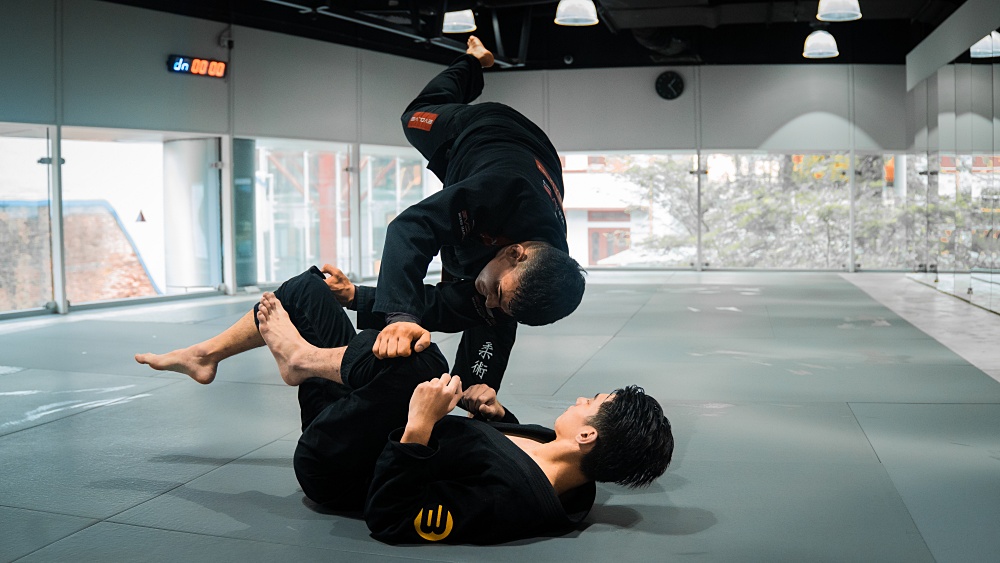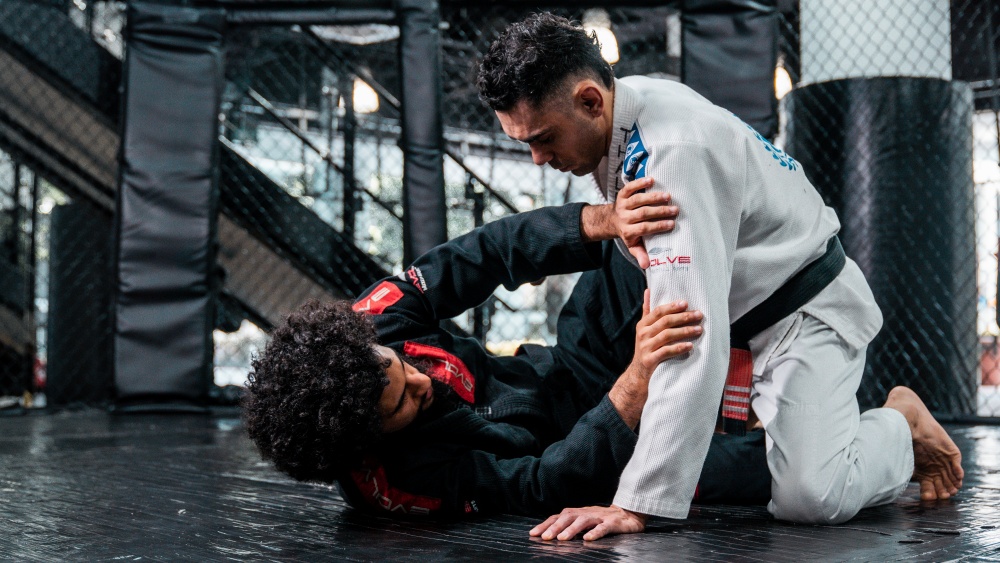The turtle is a popular defensive position in Brazilian Jiu-Jitsu. It is characterized by exposing your back and curling up to a defensive stance with your neck and limbs kept close. The turtle guard is a surprisingly versatile position! Adopted from Judo, it’s perhaps the mother of all defensive maneuvers.
This is not to say that the turtle is a purely defensive position, though. Yes, it is primarily used as a means of escape, but its unpredictable nature can also be used to its advantage. In fact, this position lets you attack and misdirect your opponents – it catches them off-guard as specific techniques from this position are not commonly used. Today we’ll talk about this amazing position and how it can benefit your game!
Common Turtle Misconceptions
The turtle is commonly thought of as a desperate move to prevent the guard pass. This is fundamentally true because it is not a good idea to turn your back on your opponent as your offense will be significantly reduced. This is especially the case in self-defense or mixed martial arts situations.
But the great thing about the turtle is that while your back may be exposed, your limbs and head are safe for the most part. This means that you can focus your attention on preventing the back take and create counters based on your opponent’s attacks.
You Can Build Your Game Around The Turtle
BJJ black belt Eduardo Telles is perhaps the first athlete that comes to mind when the turtle is mentioned. Eduardo is known not only as a world-class grappler, but he is also famous for his effective use of the turtle – as a defensive and offensive position.
Similar to masters like Ricardo de la Riva, Eduardo’s personal game came as a response from his tough training partners. He had to find a way to neutralize the dynamic game of guys like Fernando “Terere” Augusto. Using the turtle is smart because it funnels the attacker’s option, making counterattacking more streamlined.
Things You Can Attempt From Bottom Turtle
The main techniques that you need to work on when on the bottom turtle are escapes and sweeps. Keep in mind that before you work on any offense from the turtle, it is absolutely critical to stay tight and not let your opponent isolate a limb.
The most basic of escapes is the rolling escape from the turtle position. Watch the quick video demonstration by Professor Gustavo Gasperin on the rolling escape. It starts by turning your head to the opposite side from where your opponent is – meaning that if he is blocking your right hip, you turn your head to the left.
Tuck your right arm so that your shoulder can touch the mat; doing this makes your body more susceptible to movement. Now do a forward roll at an angle where you can then face your opponent and recover guard. It is important to make space to ensure that you open your legs while doing the roll. If you perform this technique properly, you should be able to secure the closed guard or at least some form of open guard.
If your opponent likes to stay near your head, another great technique you can do is the sit out escape. This position is very common when you shoot for a takedown, and your opponent sprawls. The sit out starts by forming a base under you. You then take one of your legs and extend it to the opposite hip while using your back and elbow to move around your opponent’s body.
Doing this technique can give you opportunities to counterattack. You can also back up to reset if you prefer. Watch the above clip of how Professor Ulpiano Malachias performs the technique.
Attacking The Turtle
Now we know what to do when you are stuck on bottom turtle. Here are general tips when you are on top position, attacking the person who is turtling up. Watch the video demonstration by BJJ Black belt Stephan Kresting on attacking the turtle guard.
It is important that you use both hands to control your opponent’s upper body. You can use the seatbelt grip or even grab the lapel. This ensures that you limit upper body movement. It also gives you the ability to move your opponent’s body and thus disrupting his or her base. Another key tip is to take your time and plan your attack accordingly.
It is common to see situations where one loses a dominant position due to recklessness. Remember that controlling a turtled opponent is a great position to be in; relax and attack when you are ready.
Final Thoughts
As with all techniques in Brazilian Jiu-Jitsu, technique is always king. Try not to muscle out of positions because it can be detrimental to your game. It is recommended that you study the techniques well and focus on as little explosion as possible. Work on all possible scenarios with your training partners and try to understand the underlying principles of each technique.
Also, understand that the general approach to these techniques may vary depending on what you wear (gi or no-gi). Since there are more controlling options when training gi, you might want to explore common gripping situations as well. Don’t hesitate to ask your coach for guidance if you are having difficulty with the techniques. With consistent study and practice, you’ll be able to work these positions with confidence.
You may also like:

















